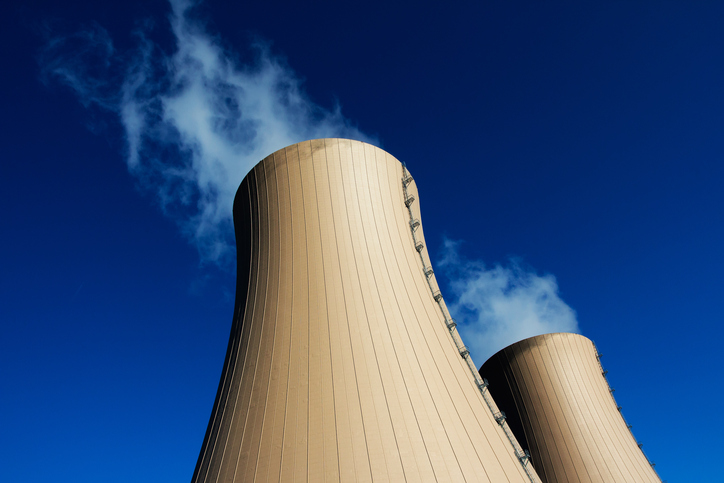
Open recirculated cooling water systems remove the heat picked up in a plant by evaporative cooling. This may be done by a spray pond, for example, combining air-conditioning needs with aesthetic consideration in industrial parks. The most common type of evaporative cooling, however, is effected in cooling towers of one type or another.
Cooling towers may operate on natural draft, as in the case of wind-cooled towers for small home air-conditioning systems or the large concrete hyperbolic towers used in power-generating stations. In process plants, the towers are more often aided by fans, either forced or induced-draft operations, to improve the cooling capacity.
There are certain fundamental considerations that should be understood in relation to open recirculated systems. First is the concept of cycles of concentration. If three cups of boiling water in a tea kettle were allowed to boil away to one cup, the residual cup would contain a three-fold concentration of soluble water salts, assuming that only steam (i.e., pure H2O) was driven off. The water would be said to be at three cycles of concentration. If the two cups of evaporated water were replaced and again allowed to boil down to one cup, the remaining water would be at five cycles of concentration. In this fashion, the soluble salts would soon become unmanageable. In practice, the percentage of replacement water is much smaller, but the increased concentration of salts still must be addressed.
To prevent this accumulation from becoming unacceptable from the standpoint of scale and corrosion, a small amount of blowdown (bleeding of the system) is maintained to control the number of cycles of concentration from evaporation. This means that make-up water must be added to equal the evaporation and blow-down losses, but this is a minor amount compared to the volume of the total system.
For example, if we need 19,000 L/min (5,000 gpm) of cooling water in a system, the cost for treatment in a once-through design would be excessive. However, in a recirculating system, the make-up may be as little as 2%, 380 L/min (100 gpm), of which perhaps only 95 L/min (25 gpm) may need to be treated with inhibitors. This brings chemical treatment into the range of economic feasibility, as compared with a once-through system.
Not only are there tangible limits, imposed by water chlorinity and hardness, as to how far one can concentrate the soluble salts in the water, but the savings effected by a recirculating system compared to a once-through system are maximized at about four to six cycles of concentration. Below this range, treatment costs become prohibitive. At high cycles (e.g., eight to 10), the additional water savings generally are not commensurate with the increased difficulty of effective treatment. If the blowdown is shut off entirely, there is still an effective upper limit of concentration dictated by water losses from drift or windage. The normal upper limits might be about 20 to 22 cycles of concentration for a mechanical draft tower.
The advantages of water savings provided by the cooling tower impose certain inherent disadvantages as well. The water becomes saturated, ensuring its full corrosion potential; its natural alkalinity may increase beyond the tendency to form protective surface scales and actually obstruct water flow. The air-scrubbing action can contaminate the water with airborne materials, notably dust fines, which form silt in the tower basin, and spores of slime, algae, and fungi that can reproduce in the warm nutrient-rich water of the system.
This article is adapted by MP Technical Editor Norm Moriber, Mears Group, Inc., from Corrosion Basics—An Introduction, Second Edition, Pierre R. Roberge, ed. (Houston, TX: NACE International, 2006), pp. 138-140.

Recent Comments